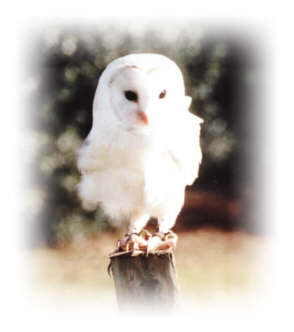Calendar - Summer May -
August Most females will be incubating the eggs during this period, briefly leaving the nest 2 or 3 times a day for a stretch and to relieve themselves. The male will provide all prey for the pair. When the young hatch the male will have to provide an increased amount of food. Each egg hatches after 31 days, Young owls can be heard calling inside the eggs shortly before hatching. The tiny hole appears in a shell one evening and the mother chips off parts of the shell with her beak to help the chick to emerge the following day. At first the youngster will be covered with sparse white down, which is replaced by longer creamy white down over the first fortnight. As two or three days may elapse between the hatching of each consecutive owlet, a brood of barn owls is a strange mixed bunch and the first one can be 30 days older than the youngest. This staggered hatching is a strategy for dealing with a variable food supply as the largest chick gets fed first then the second and so on. Thus, when food is short, the youngest chicks may starve but at least some of the brood will survive. By about 9-10 weeks old the down has been replaced by adult plumage. Their eager snoring cries, as they demand more and more food, stimulate the adults to feed them. During this period they are more often heard than seen, snoring loudly for food or hissing in the event of disturbance. Up to 50 small mammals a day are brought in during the breeding season and any surplus food is cached away in the event of wet and stormy weather when hunting can become difficult. |
